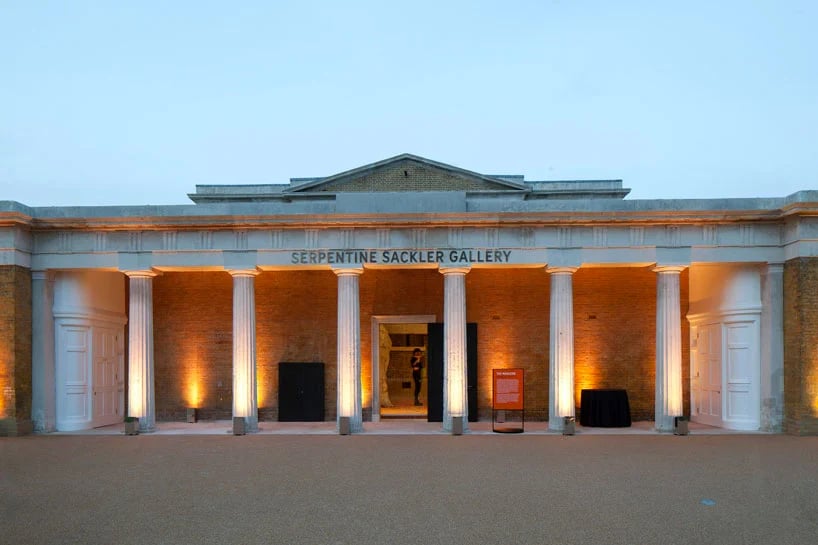
The U.S. Second Circuit Court of Appeals in New York has approved a new deal in the Purdue Pharma settlement, ordering the Sackler family to pay $6 billion—about half of their estimated wealth—to combat the opioid crisis. In exchange, the family will receive immunity in civil lawsuits stemming from the company’s sale of highly addictive prescription painkiller OxyContin.
The FDA approved OxyContin in 1995, and Purdue Pharma marketed it as the first painkiller that was nonaddictive and therefore safe for longterm use, fueling its widespread prescription by doctors.
“The Sackler families believe the long-awaited implementation of this resolution is critical to providing substantial resources for people and communities in need,” the Sackler family said in a statement.
Critics of the family, such as artist Nan Goldin—whose advocacy organization Sackler P.A.I.N. led a successful campaign to remove the family name from institutions such as the Metropolitan Museum of Art and the Solomon R. Guggenheim Museum in New York—maintain that the Sacklers knowingly mislead the public about the dangers of OxyContin, and that the drug spawned a deadly opioid epidemic.
Harvard University students and PAIN members protesting in front of the school’s Arthur M. Sackler Museum. Photo by Dumebi Malaika Menakaya, courtesy of PAIN.
The U.S. saw over 564,000 deaths due to opioid use between 1999 and 2020, according to the Centers for Disease Control and Prevention.
The new ruling from a three-judge panel brings the Purdue bankruptcy deal, which has dragged on for years, one step closer to completion. But the settlement still needs final approval from the federal bankruptcy judge overseeing the case. Moreover, the Office of the U.S. Bankruptcy Trustee—which is an arm of the U.S. Justice Department and the only party still in opposition to the deal—could appeal to the U.S. Supreme Court.
Purdue first filed for bankruptcy in September 2019, following a raft of lawsuits from states across the U.S., with an estimated total of $40 trillion in claims against the company. As part of an October 2020 plea deal on criminal charges, the company agreed to a $8 billion settlement with the DOJ that included $225 million in civil penalties from the Sackler family.
But the bankruptcy proceedings have dragged on, with the Sacklers’ demands for future immunity becoming one of the key sticking points for both sides.
Maintaining the ability to sue their Sacklers for their actions could be seen as a way of securing justice for the victims, but the extended legal battle has undoubtedly delayed the payment of much-needed funds to fight painkiller addiction. (The Centers for Disease Control estimated the opioid crisis cost the U.S. more than $1 trillion in 2017.)
This week’s “court decision allows nearly $500 million of Purdue Pharma’s ill-gotten gains to be brought back to California, to heal our communities and provide real relief to countless suffering families,” California Attorney General Rob Bonta said in a statement. “However, disappointingly, the decision does not require Purdue to lift the Sacklers’ liability shield from private claims. The victims of this crisis deserve justice and they should have the option to take Purdue to court for it.”
A second bankruptcy plan submitted by Purdue in March 2021 included $4.275 billion in payments to OxyContin victims and their surviving family members. Two dozen state attorneys general initially rejected the plan, in part because it did not include provisions allowing for the repercussion-free removal of the Sackler name from institutions.
But when the Sacklers agreed to stop seeking naming rights for nine years, 15 states, including New York, dropped their opposition in July of that year. By the end of the year, however, a U.S. district judge had overturned the deal, ruling that the Sackler family could not be granted immunity from civil lawsuits because it was the company that had declared bankruptcy, not the family itself.
The case appeared to be nearing a resolution last March, when the final nine states dropped their opposition to the settlement. In return, the Sacklers agreed to increase their $4.3 billion cash payment to up to $6 billion.
Additionally, institutions would be allowed renege on naming rights agreements with the Sacklers, provided they do not disparage the family in announcing any changes. Just last month, the U.K.’s Oxford University—one of the last institutions to maintain ties with the Sacklers—dropped their name from buildings Ashmolean Museum and Bodleian Libraries following an investigation, as reported by the Financial Times.
The latest ruling could prove significant in bankruptcy case law, granting bankruptcy court judges the authority to approve bankruptcy protections for third parties—aka anyone other than the actual debtors in the case.
The judges found that because the Sacklers were so closely linked to Purdue Pharma, it would not be possible to reach a settlement that involved financial concessions from the family without protection from civil litigation. (Criminal charges against the family would still be possible under the deal.)
Under the settlement, Purdue will be restructured as Knoa Pharma, a new drug company overseen by a public board. In addition to producing OxyContin, it will also manufacture medications for addiction treatment, with profits to go toward combatting the opioid crisis.
“Our focus going forward is to deliver billions of dollars of value for victim compensation, opioid crisis abatement, and overdose rescue medicines,” the company’s chairman, Steve Miller, said in a statement. “Our creditors understand the plan is the best option to help those who need it most, the most fair and expeditious way to resolve the litigation, and the only way to deliver billions of dollars in value specifically to fund opioid crisis abatement efforts.”
The settlement will provide OxyContin victims and their survivors payments of $750 million, between $3,500 and $48,000 each.
Ed Neiger, a lawyer representing individual victims, approved of the ruling. “It’s a great day for victims, some of who desperately need the money and have been waiting for this day for a long time,” he told the Associated Press.